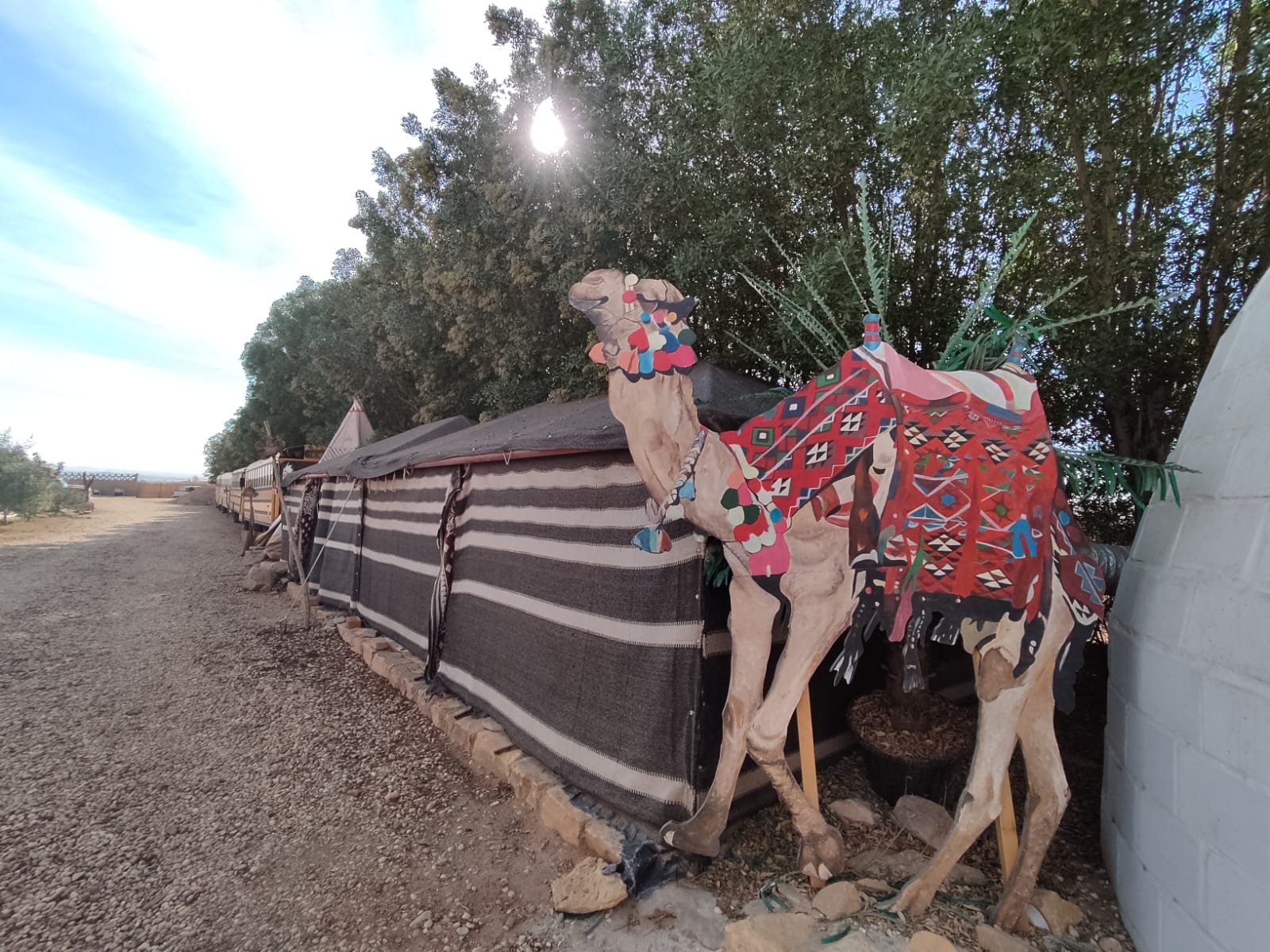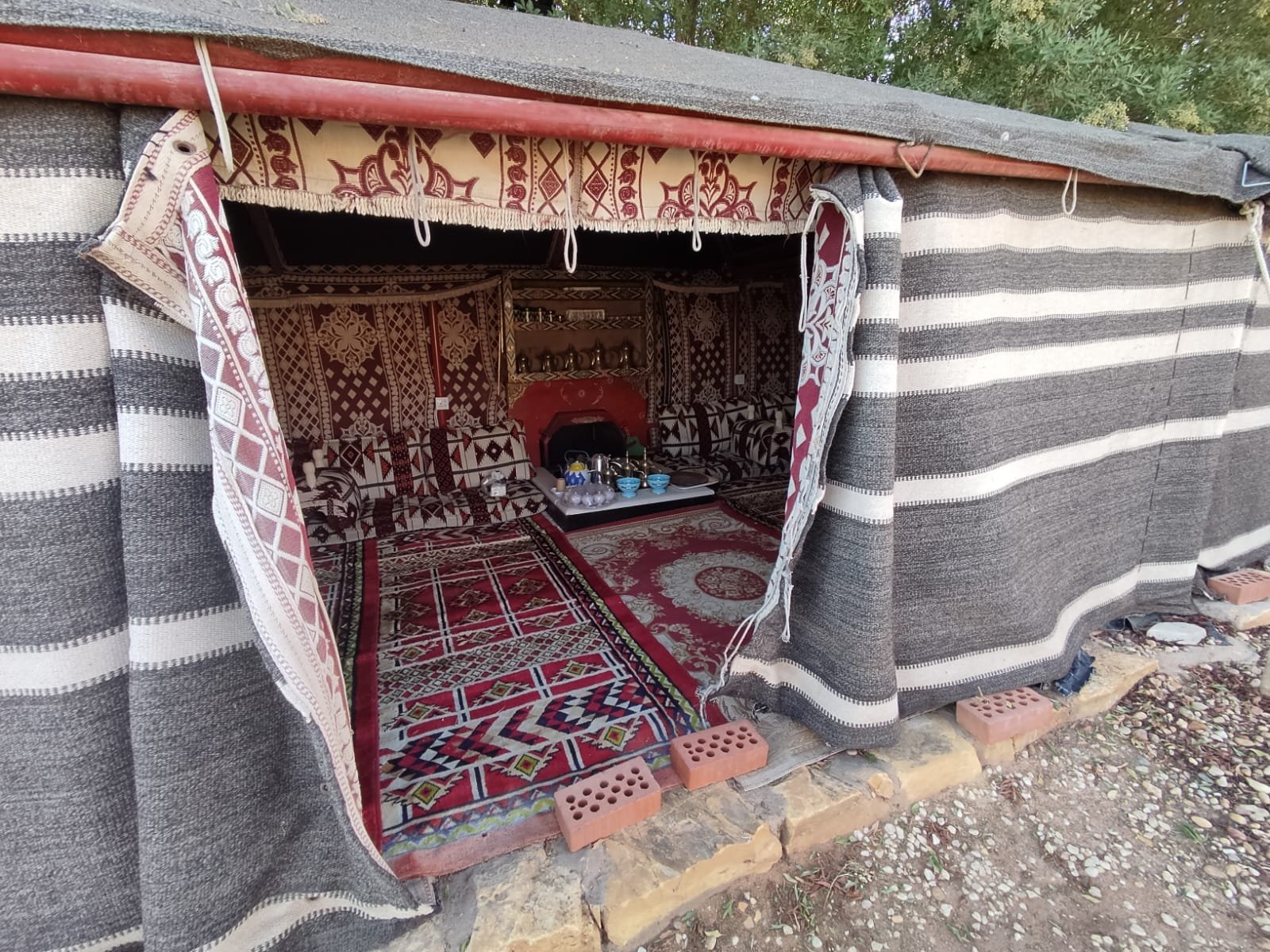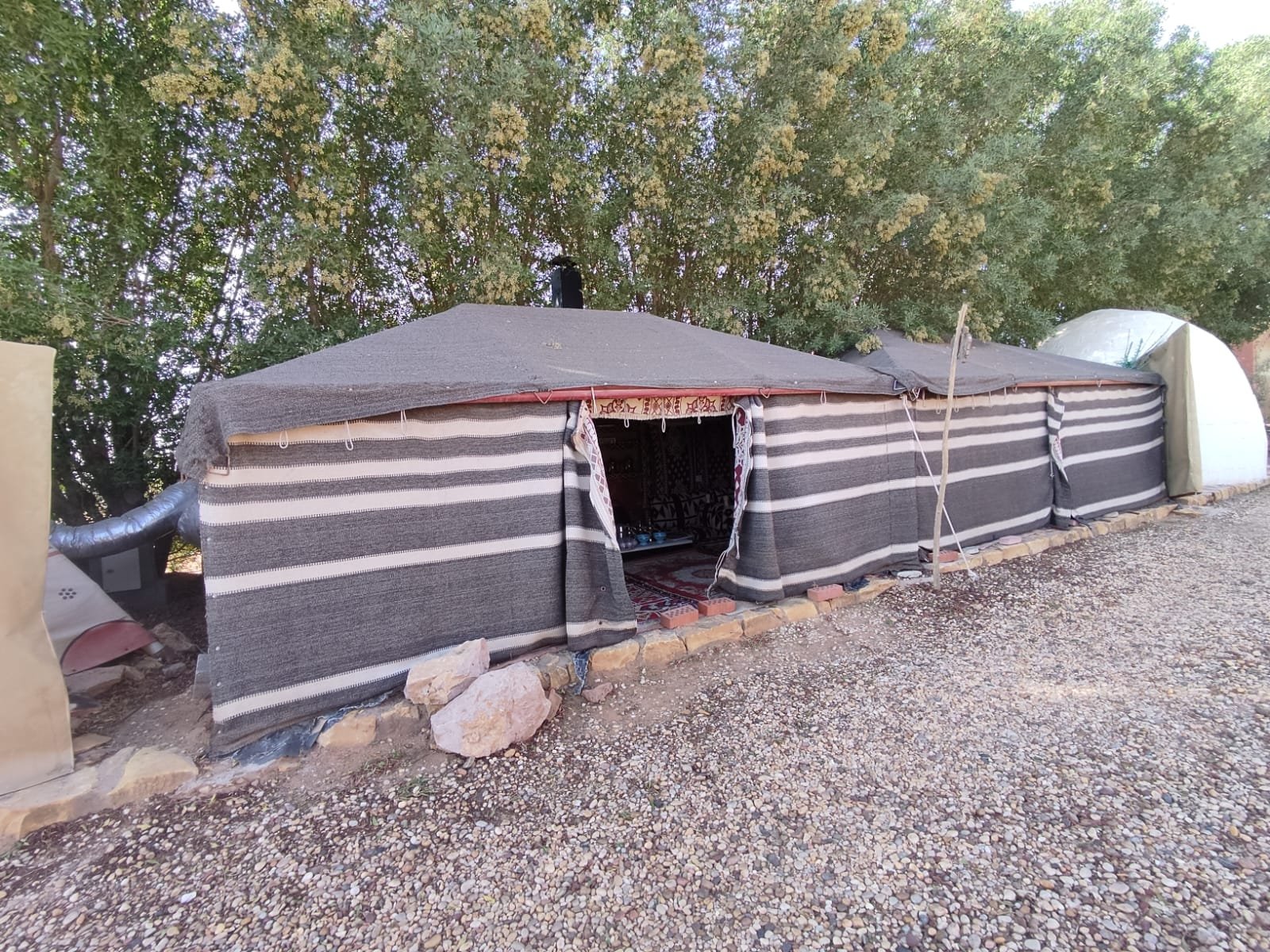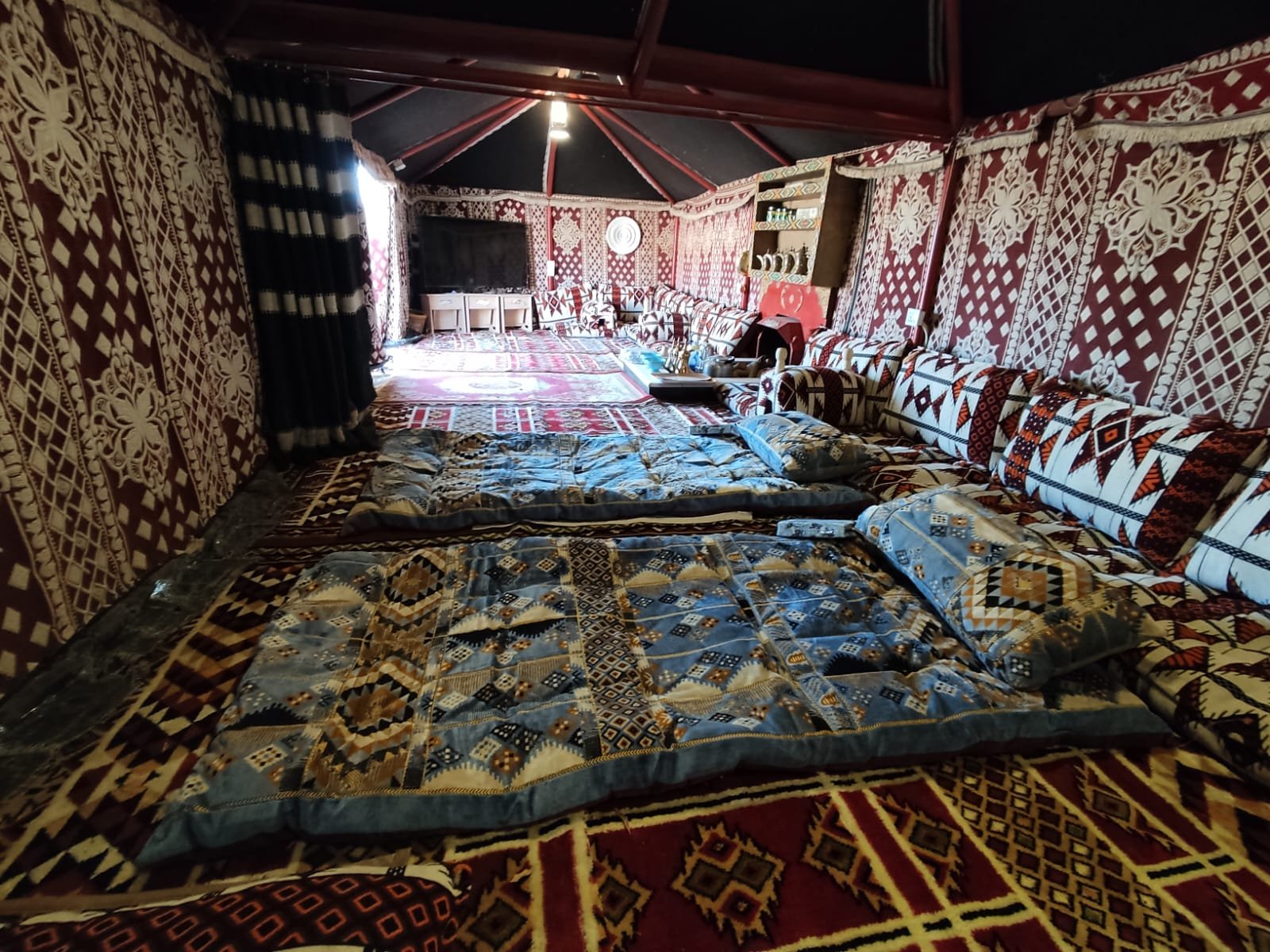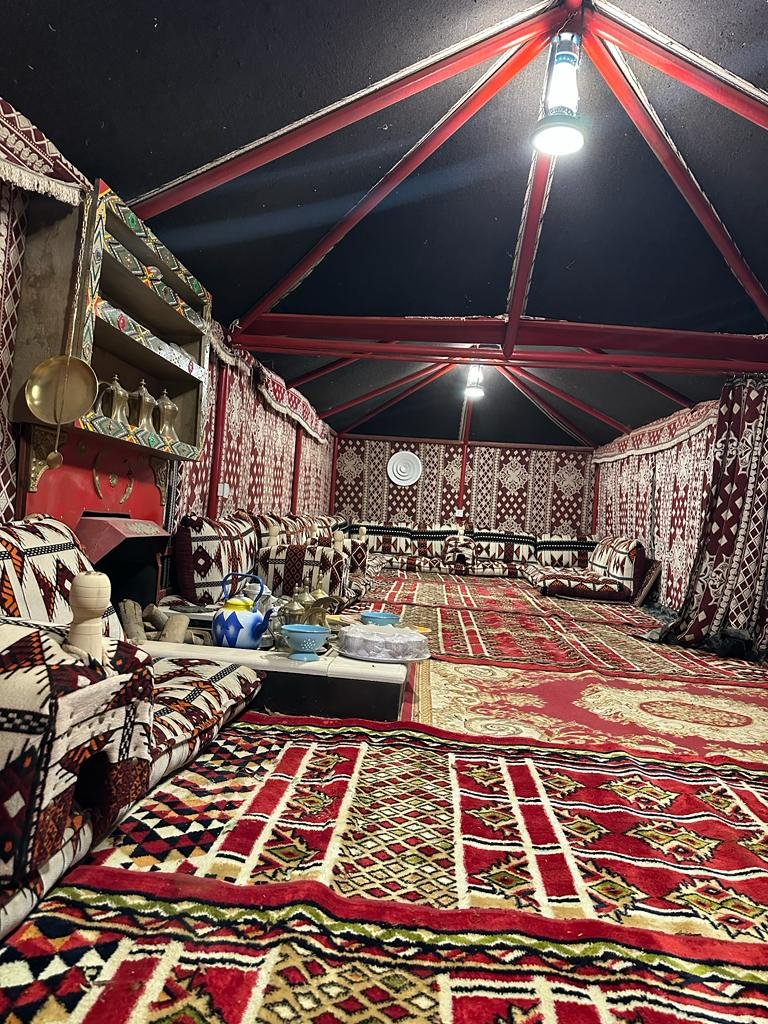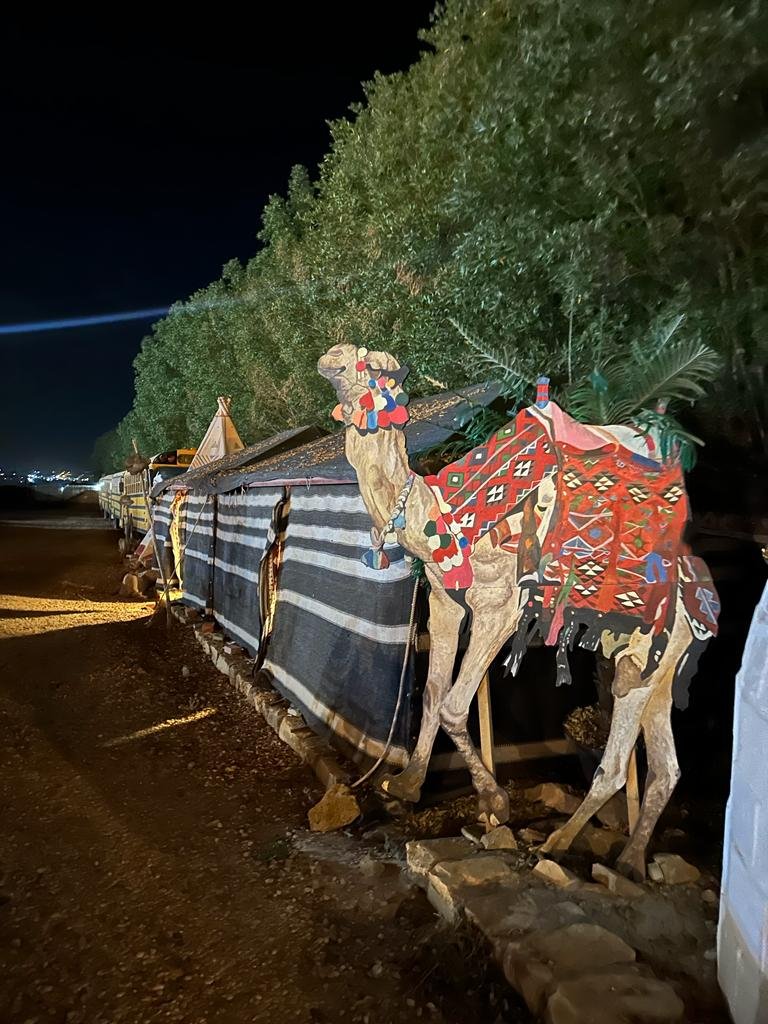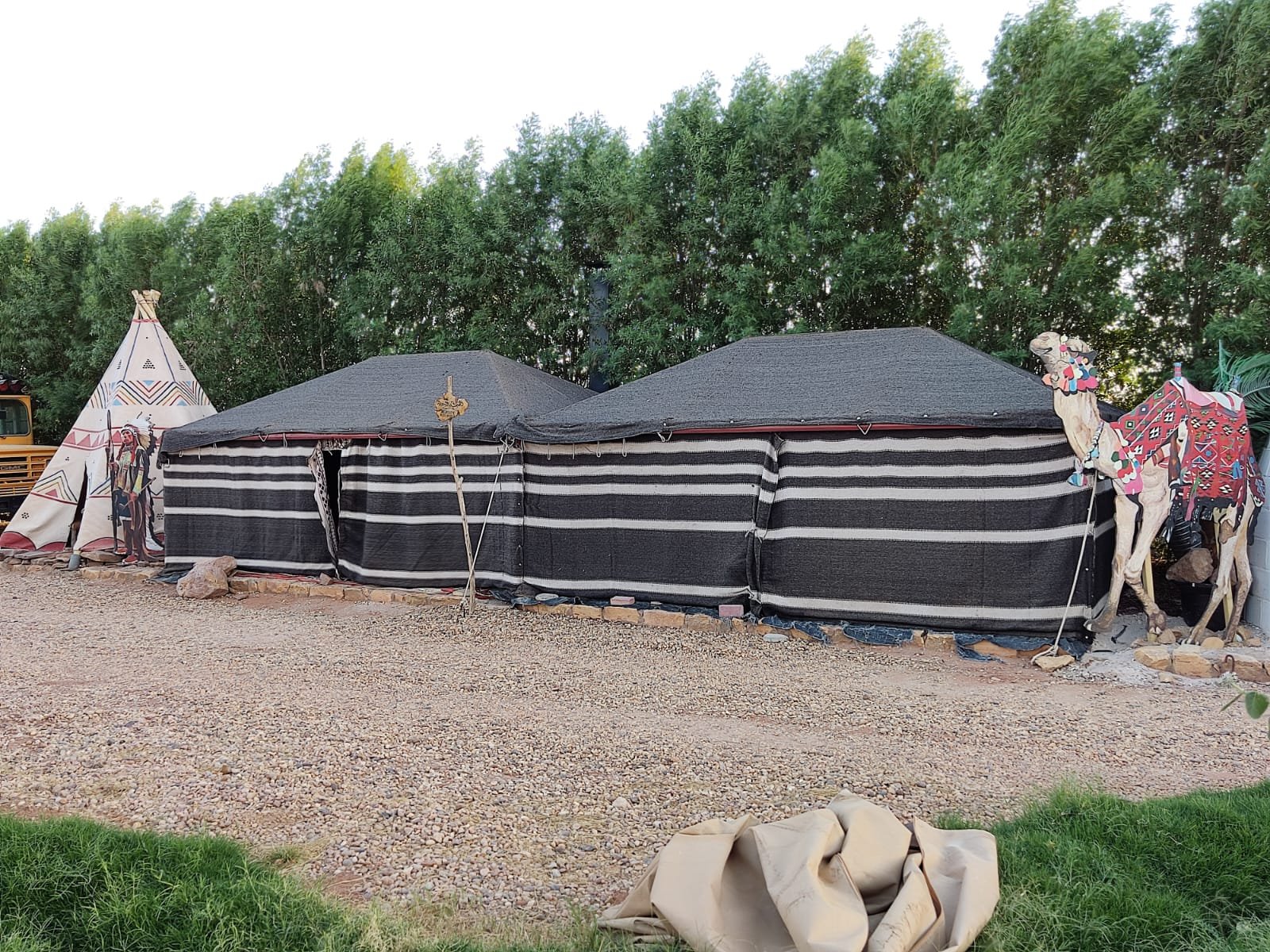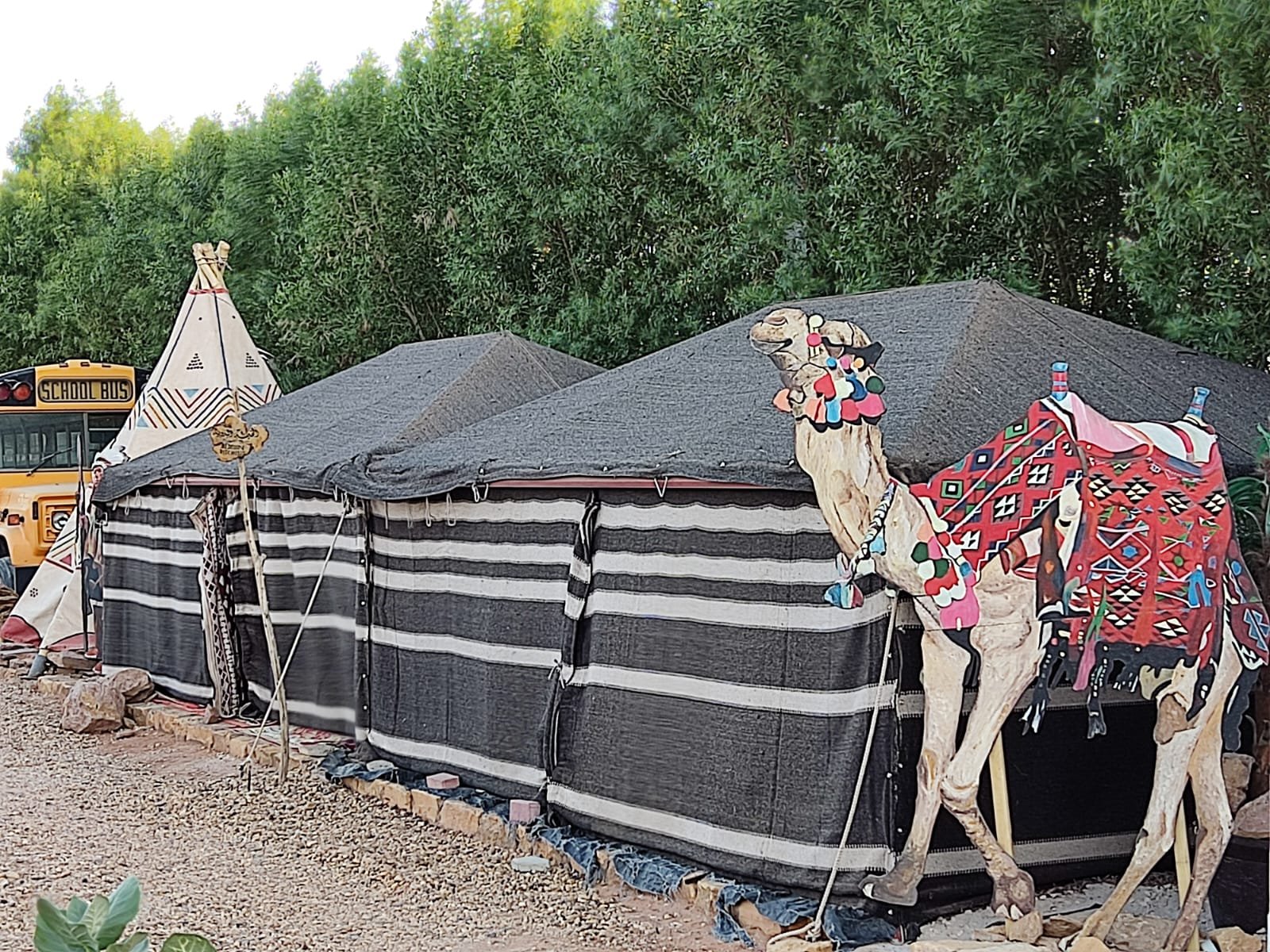
Bedouin tents
Bedouin tents
Life in the Arabian Peninsula since ancient times has revolved around three main axes: The first is urban life, which was centered around trade, the exchange of goods and services. The second is rural life, based on seasonal agriculture as well as short- and long-term farming. The third is desert life, which relied on herding—camels, sheep, and goats—and involved exchanging goods and benefits with the people of the first two axes. Due to the importance of this lifestyle in desert life, the resort administration favored establishing a symbol and a tangible representation to affirm this aspect of life for future generations and visitors. Thus, the primary symbol chosen was the Bedouin tent—simple in its structure and components, yet rich in symbolism, especially in its hospitality, reflected in its openness to strangers, welcoming and honoring them. This serves as a visual emblem—but imagine its impact when accompanied by the sensory aroma of burning wood in the majlis fireplace, where the scent of the firewood wafts for hundreds of meters, competing with the visual invitation to welcome guests and travelers.
At the crossroads of heritage and civilizations, every moment holds meaning... and every corner tells a story.
Book now and enjoy a unique experience
